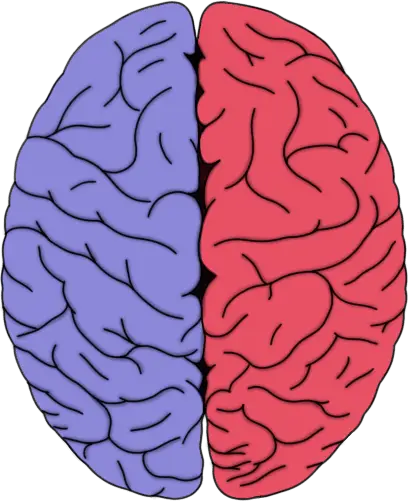Sex smells: pheromones in humans

By the middle of the 20th century, biologists had become aware of a unique type of communication occurring among insects. The communication involved the secretion of substances that were similar to hormones in some ways, but also very different. While hormones are secreted into the bloodstream to elicit some reaction in the body, these newly identified substances exited the body and were used to elicit a reaction in a conspecific (another organism of the same species). They were given the name pheromones, from the Greek pherin (to transfer) and hormon (to excite).
Since that time, a number of pheromones have been identified in invertebrates and vertebrates alike. For example, when a honeybee hive is disturbed, guard bees produce a pheromone that alerts other bees in the hive; it encourages them to exit the hive and promotes aggressiveness. Beekeepers know all about this signal; they use smoke to calm an angry hive of bees because smoke inhibits receptors in bee antennae that detect the pheromone.
Pheromones that elicit a variety of behaviors have been identified in a number of species. Some pheromones, like those seen in bees, are used to call conspecifics together to attack or defend something, some aid in marking territory, and others leave trails that conspecifics can follow (to a stash of food, for example). Many pheromones also are associated with sex.
A large number of species, from microorganisms on up, release pheromones that play some role in mating. Some species of bacteria use pheromones to tell other bacteria to prepare to receive a transfer of genetic material in a very unromantic form of bacterial "sex" called conjugation. Even mammals, however, communicate with sex pheromones. Males of a number of species investigate the anogenital region of females with their nose, which contains a special pheromone-detector called the vomeronasal organ. Through exposure to pheromones, the male may be able to tell if the female is ovulating and will be receptive to his advances.
Although pheromones have been detected in many species, it has long been debated if they play any role in human communication. One reason that some have argued against an important role for pheromones in humans is that evidence suggests we don't have a functional vomeronasal organ. However, there do seem to be some examples of hidden chemical signaling between people.
Perhaps the best known putative pheromone mechanism in humans is the McClintock effect. The McClintock effect describes menstrual synchrony, which is when the menstrual cycles of women living in proximity to one another begin to synchronize, or start at around the same time. The effect was named after psychologist Martha McClintock, who hypothesized that pheromones were responsible for the synchronization.
The McClintock effect is controversial, and some argue that it isn't a real biological effect much less something caused by pheromones. But a number of other studies have also found indications of possible human pheromonal communication. From these studies, two steroids in particular have emerged as potential pheromones: androstadienone and estratetraenol.
Androstadienone, a metabolite of testosterone, is found in male semen and in secretions from the armpit area. Research has suggested it may promote physiological arousal in women, but not in heterosexual men. Estratetraenol, on the other hand, is an estrogen found in female urine. Estratetraenol has been found to affect autonomic arousal in men. Thus, some studies suggest (though this is still a controversial area) that androstadienone and estratetraenol are pheromones that contain some information detectable by the opposite sex.

A point-light walker used to demonstrate human gait.
A study to be published this month in Current Biology investigated information about gender that might be conveyed by these two putative pheromones. The investigators, Zhou et al., explored the effects of androstadienone and estratetraenol on the attribution of gender to point-light walkers (PLWs) displayed on a screen. PLWs are a collection of dots that represent human movement (see gif to the right). By changing settings, PLWs can adopt a more masculine or more feminine gait.
Zhou et al. exposed heterosexual and homosexual or bisexual men and women to either androstadienone, estratetraenol, or a control solution while viewing PLWs that displayed a spectrum of walking styles that ranged from a feminine gait to a masculine gait, with gender-neutral gaits falling in between the two. The participants, after watching the PLW walk very briefly, had to make a judgment as to whether the figure was masculine or feminine.
The researchers found that exposing heterosexual males to estratetraenol decreased the frequency of "male" responses, but it didn't affect ratings from heterosexual females. Exposing heterosexual females to androstadienone increased the frequency of "male" responses, but this didn't occur in heterosexual males. The results from the homosexual and bisexual groups were a little more ambiguous; estratetraenol didn't have an effect and androstadienone increased "male" responses in homosexual men but only to a gender-neutral PLW (and even then it was barely statistically significant).
Zhou et al. hypothesize that estratetraenol and androstadienone were biasing men and women, respectively, to discern the opposite sex in the movement of the PLWs. Thus, the authors argue that these substances convey information about masculinity and femininity. If true, what this means for everyday male-female interactions is unclear. The concentrations of the steroids that Zhou et al. used were much higher than you'd be exposed to just by standing next to someone on the subway.
So, there is much still to be learned about human pheromones. Even if androstadienone and estratetraenol are capable of communicating gender-specific information, their actual effect on human behavior today may be negligible. Thus, human pheromones may just be vestigial artifacts from our evolutionary history that we don't really have a use for anymore. On the other hand, there may be a complex system of communication occurring between people all the time that we are completely unaware of. And this system of communication could be shaping important decisions in your life, such as who you mate with, without your conscious realization.
Zhou, W., Yang, X., Chen, K., Cai, P., He, S., & Jiang, Y. (2014). Chemosensory Communication of Gender through Two Human Steroids in a Sexually Dimorphic Manner Current Biology DOI: 10.1016/j.cub.2014.03.035


